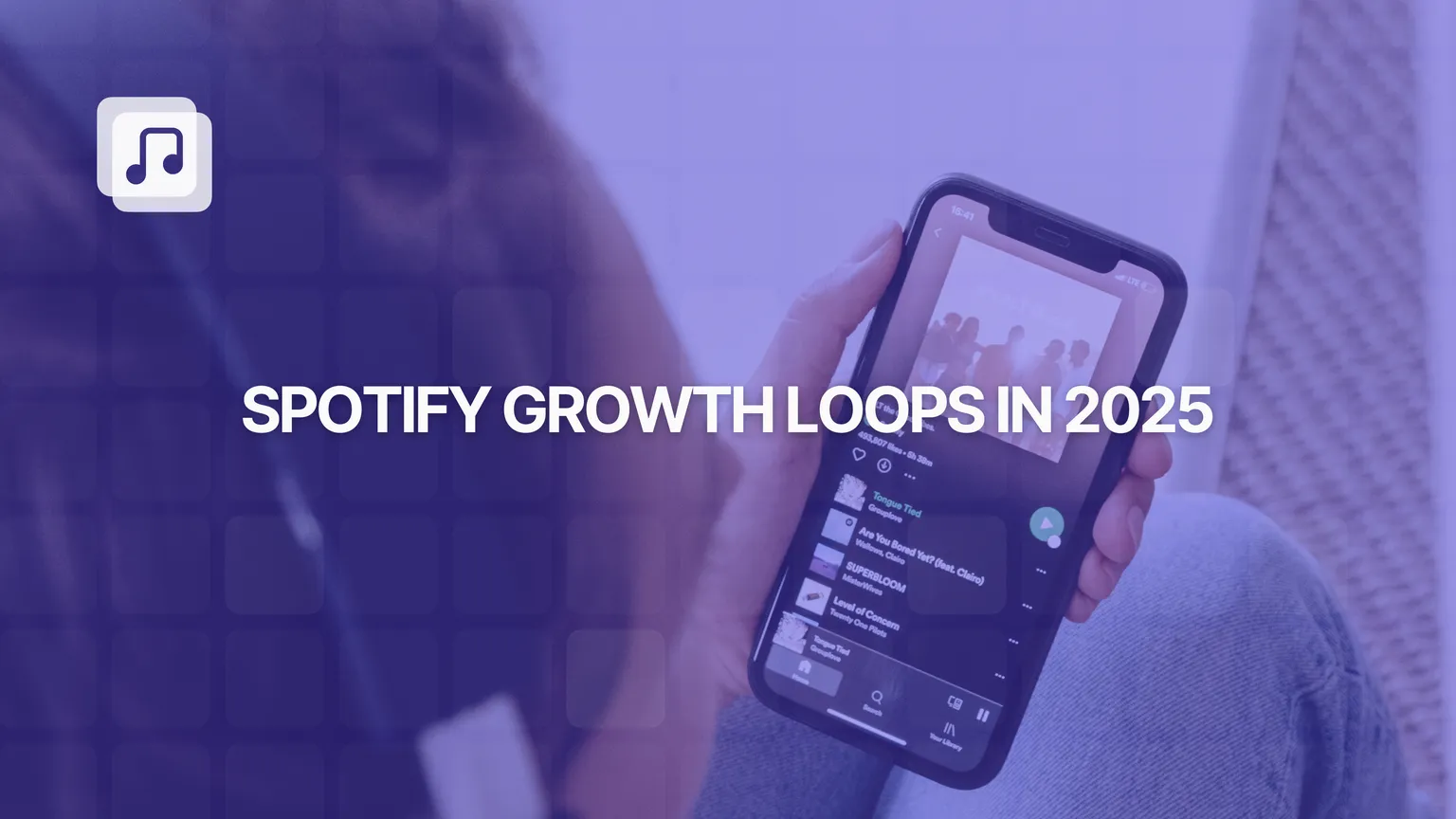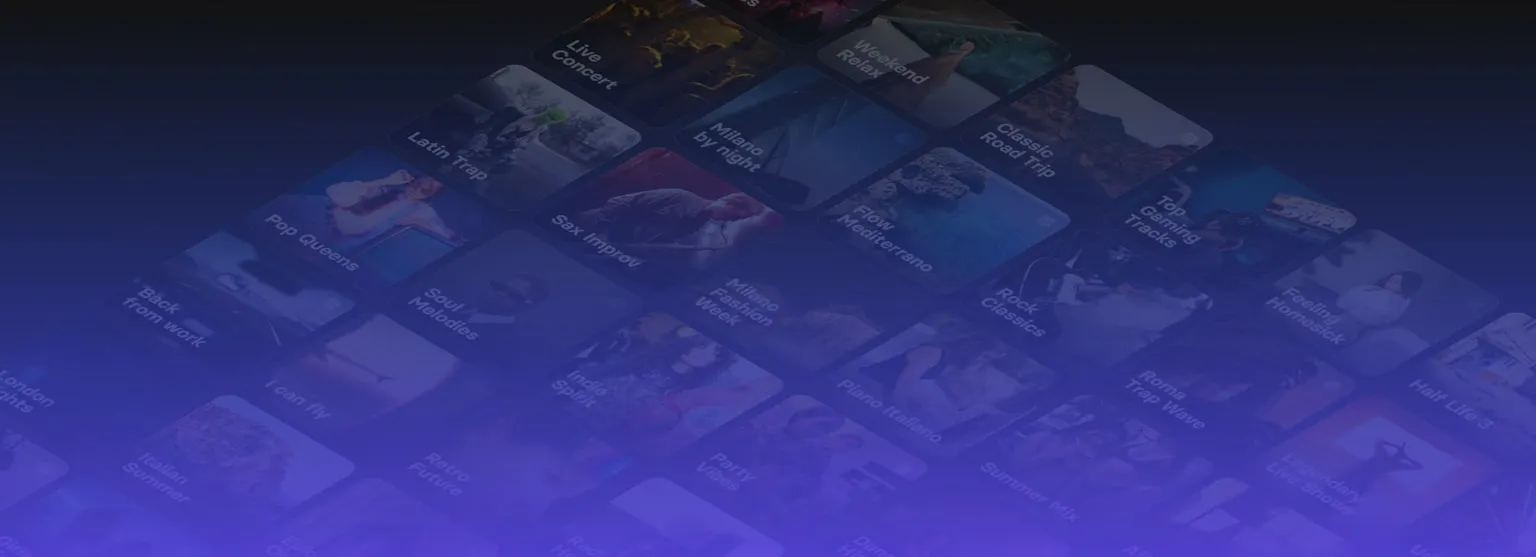
If you’ve ever released a song on Spotify, you know the excitement that comes with launch day. You’ve spent weeks, maybe months, writing, producing, mixing, and perfecting your track. You hit that “release” button and… you wait. At first, you might get some streams from friends, maybe a playlist or two, and a few posts on social media. But then, like a balloon slowly losing air, the hype dies down.
Sound familiar?
That’s because many artists treat each release like a single, isolated event. You put in all your energy, push hard on release day, and then move on to the next song. The problem with that approach is simple: it doesn’t build momentum. Spotify’s algorithm isn’t looking at one moment in time. It’s measuring consistency, engagement and the way each release connects with the last.
This is where Spotify growth loops come in. Growth loops are all about turning every new track into fuel for the next one, building a cycle of steady progress instead of stop-and-go bursts of activity. Once you understand how they work, every release becomes a step forward in your career rather than just another drop in the ocean.
What we're going to talk about:
- Why you can’t rely on one-off promotion
- The three Spotify growth loops every artist needs
- Turning growth loops into a long-term strategy
- A real-world example
- How Matchfy helps you build stronger growth loops
Why you can’t rely on one-off promotion
Let’s be real, most independent artists don’t have the budget or connections of a major label. If your only strategy is to push each release hard and hope it sticks, you’re setting yourself up for disappointment. That “all-in-one” approach is like throwing spaghetti at the wall. Some might stick, most won’t.
Spotify, on the other hand, rewards artists who create steady streams of engagement. Their algorithm looks for patterns: consistent saves, regular releases, followers engaging with your new tracks, and playlists that keep people listening. If you’re only active in short bursts, the algorithm has no reason to push your music further.
Growth loops solve this by creating a self-reinforcing cycle. Each time you release something new, you’re feeding data back into Spotify, data that makes your next release even more effective.
Don't you know how to promote your music without getting scammed? Discover how to do it by reading the full article on our blog!
The three Spotify growth loops every artist needs
Let’s break down the three loops that matter most in 2025 and how you can start building them today.
1. The Release Radar loop
Release Radar is one of the most powerful tools Spotify gives independent artists. Every time you drop new music, your followers automatically see it in their personalized Release Radar playlist. Think of it as a direct line between you and your fans.
How the loop works:
- You release a new track.
- Followers get it in their Release Radar feed.
- They stream, save, or share it.
- Spotify reads these positive signals.
- The algorithm boosts your visibility, making it easier for even more fans to discover you.
How to strengthen this loop:
- Encourage people to follow you before release day. Pre-saves are a great way to make this happen.
- Use your socials to hype upcoming releases and remind fans that following ensures they won’t miss out.
- Pitch every release through Spotify for Artists at least a week in advance. This increases your chances of editorial and algorithmic support.
The metric to watch here is simple: how many of your followers are actually streaming and saving the new release? The higher this conversion rate, the stronger your loop.
2. The Save-to-Stream loop
Saves are like gold on Spotify. When a listener clicks that little heart icon or adds your song to their personal library, Spotify sees it as one of the strongest engagement signals. A high save rate tells the platform: this track matters to people.
How the loop works:
- A listener saves your track.
- Spotify registers strong engagement.
- The algorithm rewards the song by pushing it into Discover Weekly, Radio, or similar artist feeds.
- New listeners hear it, some of them save it too.
- The loop repeats, growing your reach.
How to encourage saves:
- Don’t just ask people to stream, ask them to save the track.
- Offer fans something extra, like behind-the-scenes content or early access to your next project, in exchange for saves.
- Make your first 30 seconds unforgettable. If the hook doesn’t grab them, they won’t save.
- Run small targeted campaigns (ads or organic posts) aimed at listeners who are likely to become loyal, not just passive.
Track your save-to-listener ratio closely. If it’s high, you’re building a strong foundation for Spotify’s algorithm to work in your favor.

3. The Playlist chain loop
Playlists are the lifeblood of Spotify discovery. But chasing massive playlists with hundreds of thousands of followers isn’t always the smartest move. What you really want is active playlists where listeners engage with the music.
How the loop works:
- Your track gets added to a small, user-curated playlist.
- People listen and save your track.
- Spotify notices the engagement and pushes your track into algorithmic playlists.
- Other curators discover it and add it to more playlists.
- The cycle repeats, expanding your reach organically.
How to build the chain:
- Target smaller, niche playlists where your genre thrives.
- Build relationships with curators who genuinely care about their audience.
- Focus on playlists that deliver saves, not just streams.
The key metric here is playlist-to-save conversion. Streams without saves are empty calories. You want engaged listeners who stick around.
Turning growth loops into a long-term strategy
Growth loops aren’t just hacks, they’re systems. Once you’ve set them up, every release fuels the next. But you can make them even more powerful with a few habits:
- Use data smartly: look at your Spotify analytics and build campaigns that amplify what’s already working.
- Don’t forget your back catalog: songs you released months ago can still enter growth loops if you give them fresh attention.
- Map the listener journey: how are people discovering you? What convinces them to save or follow? Refine each step.
- Stay consistent: regular releases keep the loops active and give Spotify constant reasons to promote you.

A real example
Let’s say an independent hip-hop artist drops a new single every six weeks. Before each release, they run a small pre-save campaign, reminding fans to follow them. Their track gets picked up by a couple of small playlists, and thanks to strong saves, Spotify starts pushing it into Discover Weekly. By the third release, their Release Radar streams double. By the fourth, their back catalog gets a boost too.
Within six months, their monthly listeners grow from 20,000 to 70,000, not from luck, but from consistent loops building on each other.
How Matchfy helps you build stronger growth loops
Of course, setting up these loops takes time and effort. That’s where platforms like Matchfy can give you a major advantage.
- Organic Playlist Placement: get your tracks in front of real listeners, not bots.
- Audience Targeting: Matchfy connects you with curators who can put your music in playlists where it will actually engage.
- Data-Driven Insights: track which playlists, saves, and strategies are working so you can refine your loops.
- Cross-Platform Support: beyond Spotify, Matchfy also helps with promotion on TikTok, Instagram and YouTube making your ecosystem even stronger.
It’s not about quick fixes or fake streams. It’s about building a sustainable system that keeps your music moving forward.
Make every release count
The music industry is more competitive than ever, but also more open to independent artists than at any point in history. The difference between fading into the noise and building a lasting career often comes down to strategy.
Spotify growth loops give you that strategy. They ensure that every song you release doesn’t just live and die on launch day but continues to work for you weeks, months, even years later. Pair that with the right tools, like Matchfy, and you’re not just making music, you’re building momentum.
So, next time you’re preparing to drop a track, think bigger than release day. Think about the loops you’re creating. Because the more you feed them, the stronger they get and the closer you move to building a career that lasts.

